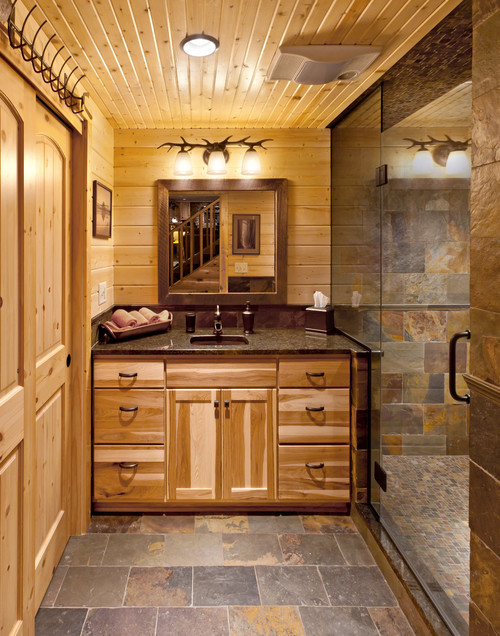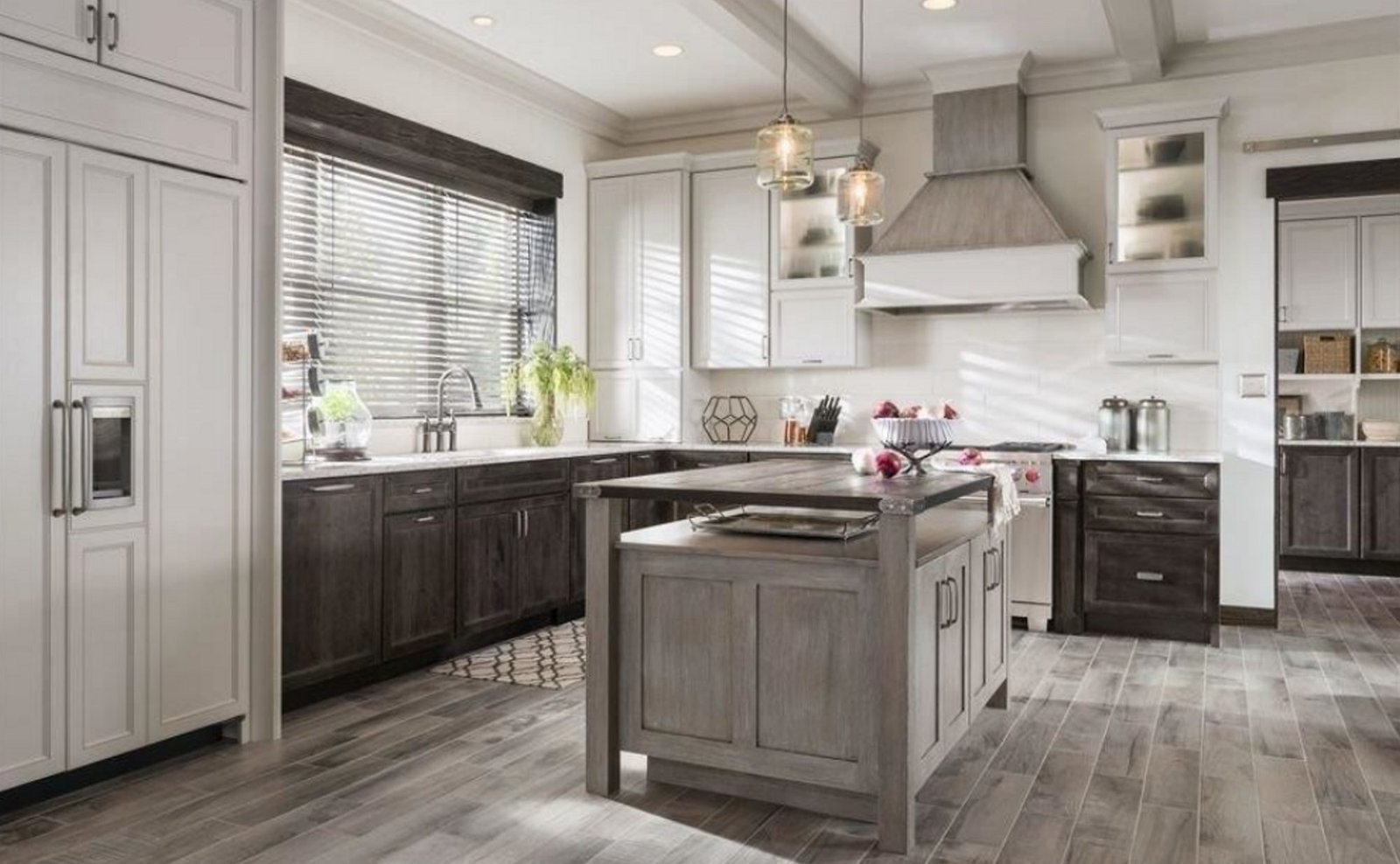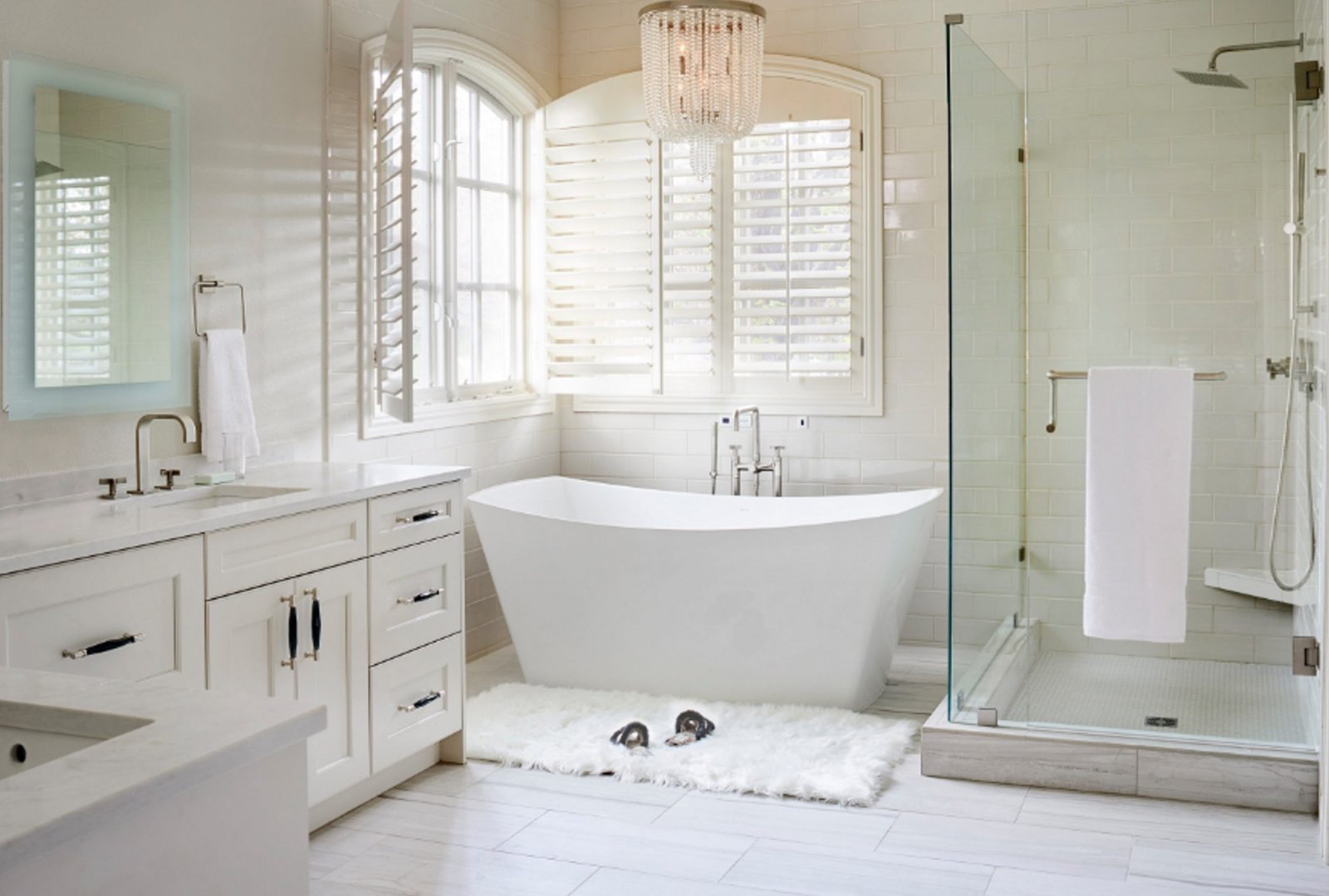Slate flooring has a unique look, warm, inviting, sometimes rustic. This is due perhaps to the fact that Slate is a natural stone that varies in color and texture from one tile to another.
Its unique colors are highly appreciated by homeowners but certainly slate floors require regular maintenance unlike the ceramic tiles.

Photo by Holiday Kitchens – Browse bathroom photos
INSTALLING SLATE TILES
First Step: The first step in installing slate in your bathroom is choosing the right slate type. In other words, you must choose a type of slate that withstand to constant humidity for the shower and a type of slate that allows the use of waterproofing for the bathroom floor and walls.
The best models of flooring slate tiles are those which have a compact texture and also have a high resistance to stains. Their big disadvantage is that they do not allow the use of waterproofing.
However, most manufacturers do not recommend the use of waterproofing. If you still want to use a waterproofing, try first time to test, it on a small area to see how your slate tiles react.
For Shower: To install slate in the shower, check first what type of slate fits in an area with high humidity. Test a sample to see if it is suitable for such kind of spaces.
The process is simple. Take a sample of slate and soak it in a bucket of water for a while and then let it dry. Scrub the slate piece with a brush. If the water is muddy and slate looks like it would fall apart, then this is the signal that you should not use that kind of slate in the shower.
Slate that can be waterproofed is suitable for tiling the walls in shower but still it should not be used for flooring. For the shower floor use porcelain tiles because slate require regular maintenance, waterproofing and is too slippery.
A major disadvantage of installing slate in shower is that this material is dark colored and the shower will look like a dark cave if you don’t have the proper light.
The Substrate: Another key element in installing slate flooring in bathrooms is to use a substrate that is stable, especially for floors. Generally, concrete is a good support for a natural stone floor.
However, the main problem of the substrate for floors is not to support the weight of the stone tiles but to withstand to the deviation or the deformation of the floor. Actually this depends on the space between the beams, especially in the case of wood structures. If the space between the beams is large, the floor will move more because of expansion caused by changes in temperature or humidity.
Grouting: After slate flooring is installed in the bathrooms, the next step is grouting. After grouting is done slate flooring should be polished to remove debris and restore its natural glow. Excess is removed using a sponge soaked in water, Rinse thoroughly and often.
It is highly recommended to waterproof the slate surface before installing it.
Using Tips for Swisstrax Interlocking Floor Tiles (howtobuildahouseblog.com)


